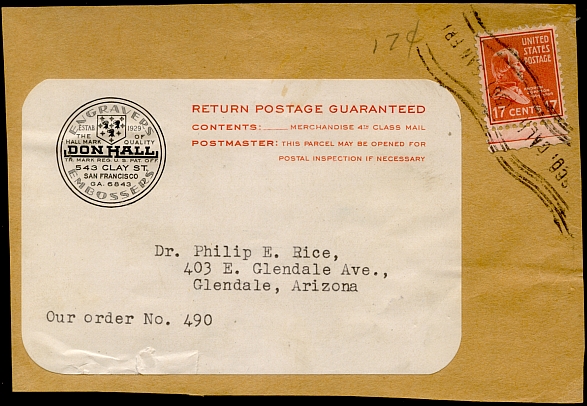
The Seventeen-cent Prexie
Fourth class use
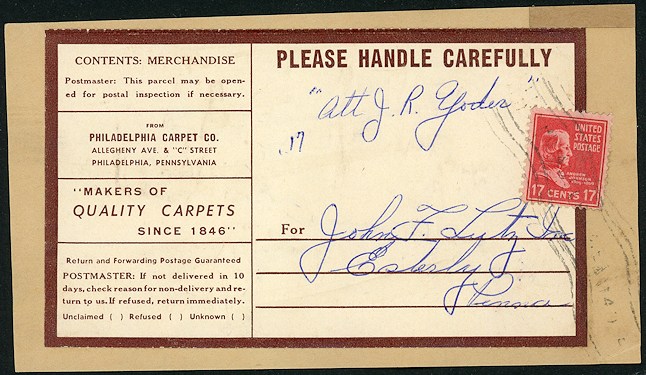
A fragment of a parcel wrapping sent to zone 1. Not knowing the time it was sent nor the weight, it coud have been sent either before March 26, 1944, when it would have weighed between eight and nine pounds (eight cents for the fist pound and 1.1 cents for each of the next eight) or after, up until January 1, 1949, for seven to eight pounds since there was a one cent surcharge.
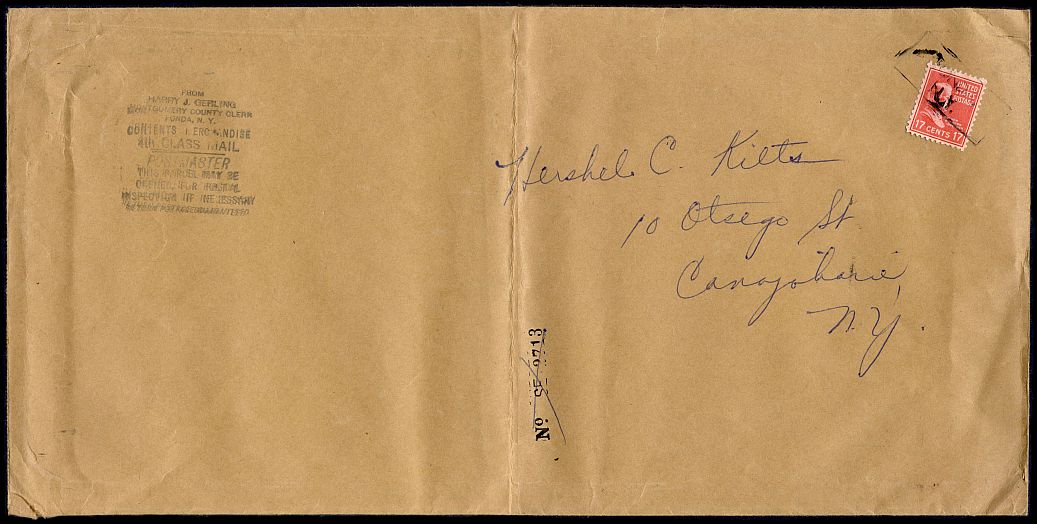
This large envelope could not have had too heavy contents, ruling out earlier dates. It was sent within zone 1, and if it weighed one pound or under in total would have been mailable for seventeen cents between October 1, 1951 and October 1, 1953. If mailed between January 1, 1949 and October 1, 1951 the contents would have weighed between two and three pounds.
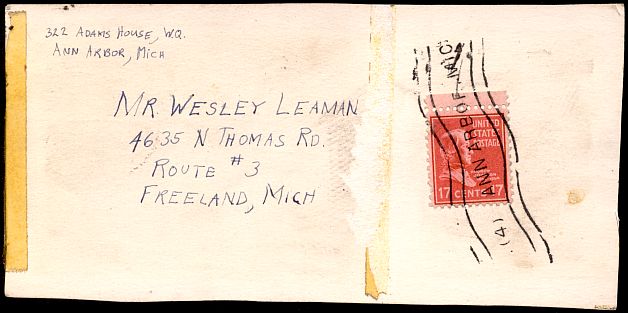
This laundry tag was mailed between October 27, 1938 (when the seventeen-cent Prexie was first available) and January 1, 1949. This interval spans the time when there was a three-cent discount for mailing a package on a rural route for delivery to zones1-8, and the back of the tag, which bears fourteen cents in postage, is stamped "Mailed on rural route."
If the package of laundry, sent to zone 2, had been mailed before March 26, 1944 it would have weighed eight to nine pounds. If mailed between March 26, 1944 and January 1, 1949 a surcharge of 3%, one cent minimum, would have applied, and the total weight could only have been seven to eight pounds.
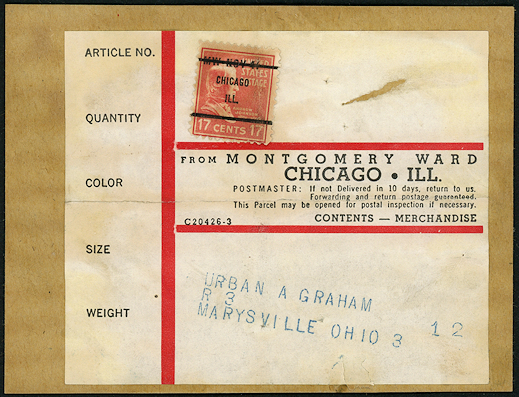
A chunk of a package sent to zone 3. Sent in 1941, the package would have weighed between four and five pounds: nine cents for the first and two cents for each after that. No other zone 3 rates come out to seventeen cents.
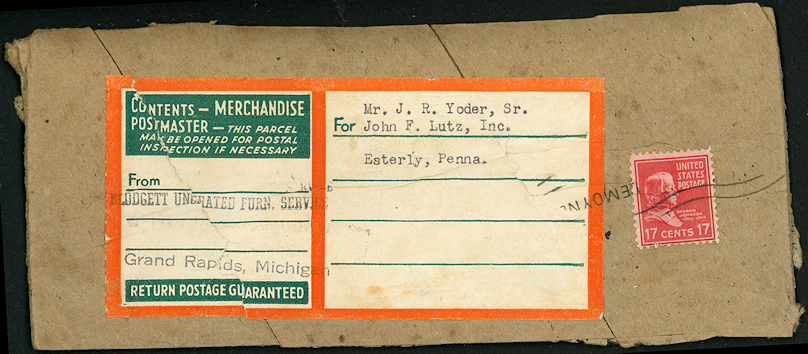
Another part of a package, sent to zone 4. The only logical rating is 3 pounds sent between October 1, 1932 and March 26, 1944. The first pound cost ten cents, and each pound after cost 3.5 cents.
